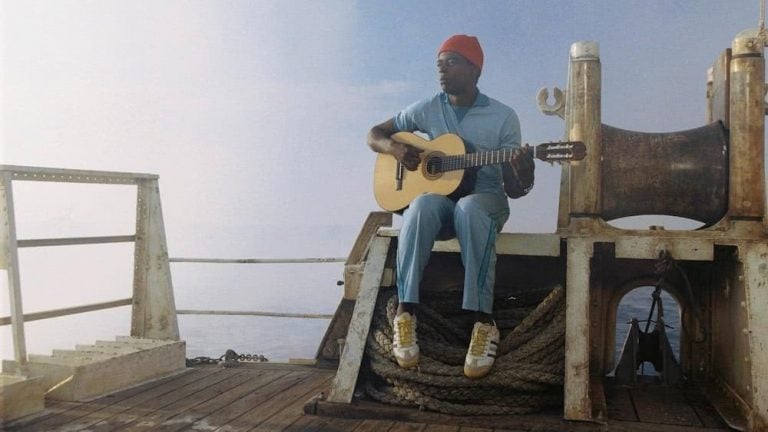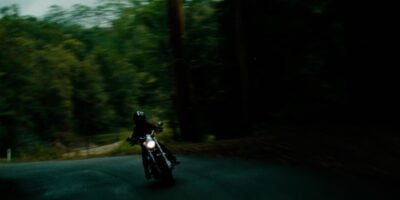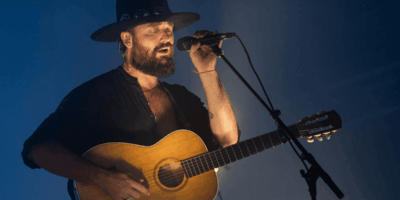Like so many musical icons, Jorge Mário da Silva (perhaps better known by his moniker Seu Jorge), has led a colourful life, one rich with experience. Born in Belford Roxo, just outside Rio de Janeiro, he grew up in the favelas. By the age of 10 he began working odd jobs to help support his parents and three brothers, but his love for music and dance – especially the samba – was obvious from an early age. “Growing up in Brazil, music was all about dancing and the rhythm: samba, soul and funk,” he says. “I was never really into rock ‘n’ roll.”
A gifted performer, Jorge would regularly stay out late, singing at clubs across Rio. In 1989, at the age of 19, he became homeless, while continuing to make a name for himself among the local dance halls. A fateful night in 1990 would cement his determination to succeed. “My brother was killed and I knew I had nothing more to lose,” he explains, simply.
Taken under the wing of Brazilian music legend Paulo Moura and his nephew, the composer and performer Gabriel Moura, Jorge learned to play guitar, auditioned for a musical, and worked tirelessly to become a cross-cultural artist with the discography and film credits that would later propel him to superstar status. “I saw these talented people – actors, musicians and dancers – and I thought I would like to do that.”
Around the same time, almost 10,000 kilometres away, David Robert Jones – David Bowie to his fans – had just left his New Romantic-era behind to form rock four-piece Tin Machine. In retrospect, it’s bizarre that Jorge and Jones’ paths would ever cross, or that their lives and music would be forever linked thanks to the vision of one American director.
“I never really knew much about Bowie growing up; most of the musicians I listened to were black,” he says. “I remember in the ’80s – his song ‘Let’s Dance’ – and I saw him as an actor in a couple of roles.”
By 2002, Jorge had released one solo album, Samba Esporte Fino and one with his band, Farofa Carioca, Moro No Brasil in 1998. But it was during this time that he captured the imagination of critics and viewers alike, thanks to his breakout role as Knockout Ned in Fernando Meirelles’ City Of God.
“Soon after that, Wes [Anderson] called me about playing in a movie for him. He started talking about doing some versions of David Bowie’s classics. I confessed to him I’d never heard these songs before,” Jorge laughs. “Songs like ‘Rebel Rebel’, ‘Changes’ and ‘Ziggy Stardust’.”
Anderson knew Jorge was the perfect fit for the role of the singing sailor Pelé dos Santos in his star-studded masterpiece The Life Aquatic With Steve Zissou, despite the fact Jorge has admitted to barely speaking English at the time. “When I got this opportunity to do this movie with the great director Wes Anderson, side by side with so many amazing actors like Bill Murray, Owen Wilson, Cate Blanchett and Willem Dafoe, it was awesome, you know?
“It was a highlight of my career for sure,” he adds. “The big challenge for me was to perform all those classic songs, especially without the equipment you need to record. I was just alone with my guitar. It was a lot of work, but I had a lot of fun too.”
The Life Aquatic With Steve Zissou went on to win a slew of awards, and the resulting soundtracks continue to convert Bowie fans to Brazilian music and vice versa, much to Jorge’s surprise. “I never played these songs after shooting the movie because I never expected that Wes was going to release an album,” he explains. “He asked me all the time while we were shooting the film to record a session for him but I didn’t think he would use the recording, except as part of the movie, but he did.”
Young people connect to my songs with their older brother, sister or father. They bond over my covers. It’s so beautiful to see.
Indeed, Anderson did so twice. In 2004, the original soundtrack was released – then a year later The Life Aquatic Studio Sessions Featuring Seu Jorge was dropped. “I first discovered the album in 2005 when I was playing at Coachella – that was a huge surprise for me,” he says. “A lot of people wanted me to perform the album. It has a strong connection over two generations. Young people really connect to my songs with their older brother, sister or father. They bond over my covers. It’s so beautiful to see.”
Only after Bowie’s untimely death in 2016 did Jorge feel compelled to play his acoustic re-stylings for a large audience. “Three days after Bowie passed away my father passed away also, so I decided to do a tribute to Bowie. It’s a really big honour to do a tribute to this icon who has brought so much joy and pleasure into the world, and it’s very flattering.”
Before Bowie lost his battle with liver cancer, he praised Jorge’s re-imaginings, calling them a “new level of beauty”. Australians feel the same way about Jorge’s work, evidently. “I have a connection with the people in Australia. I wish my dad could see me.”


































